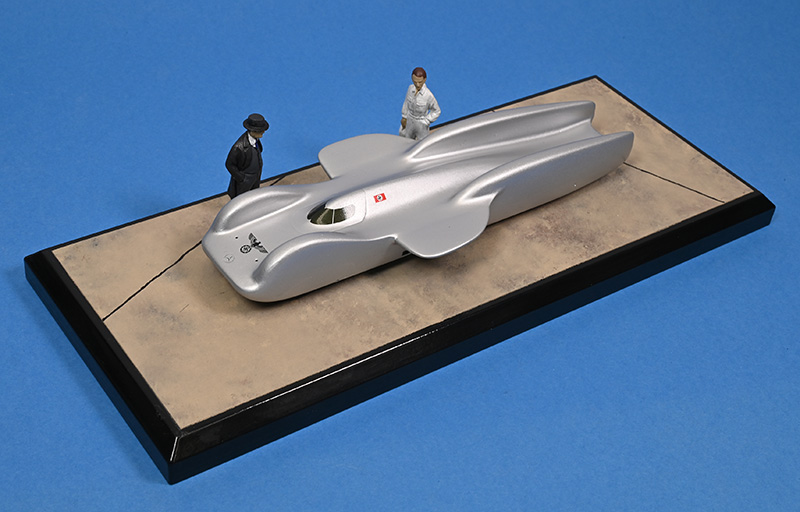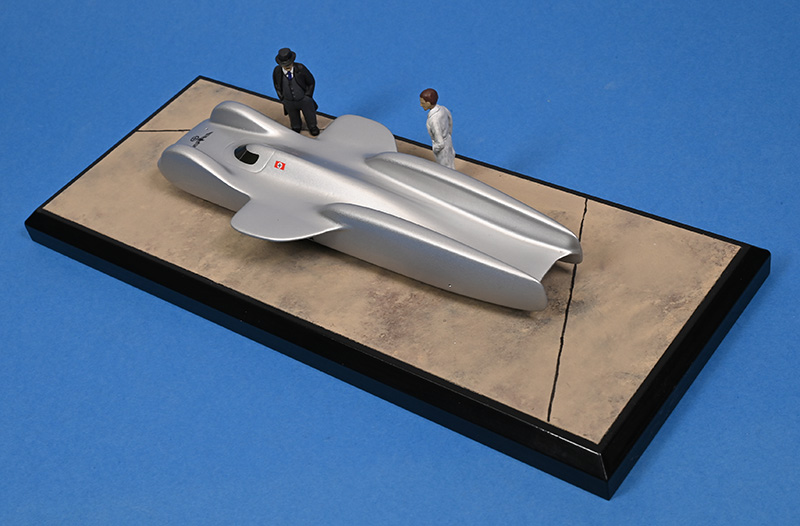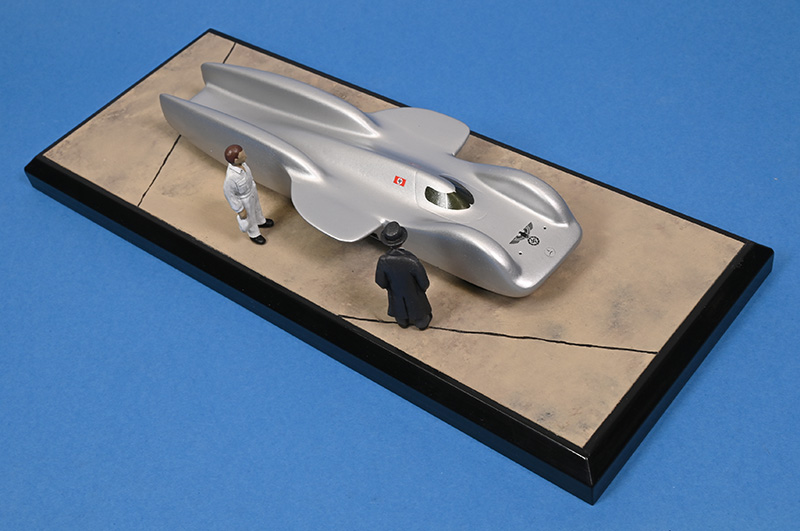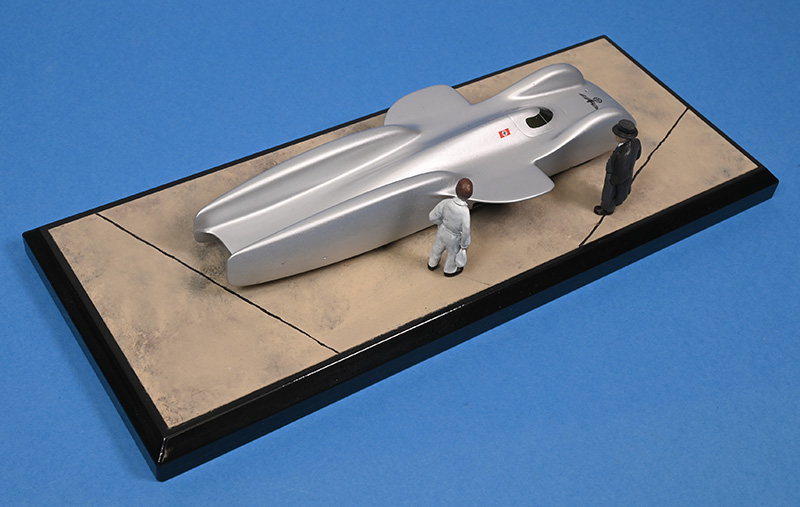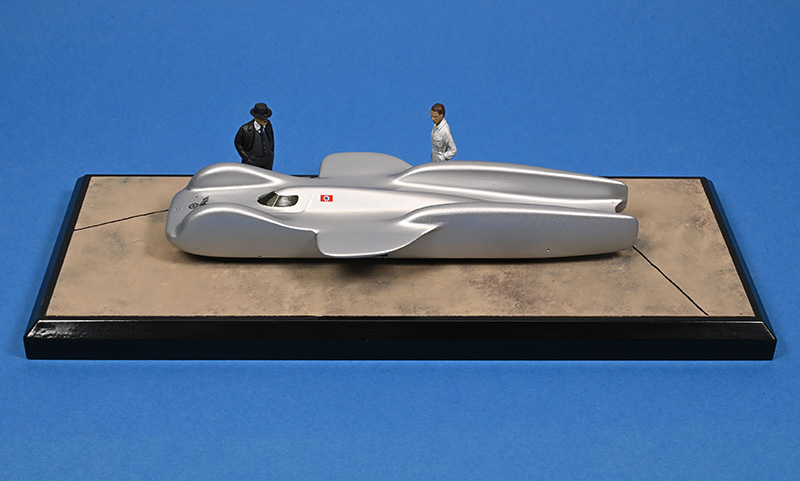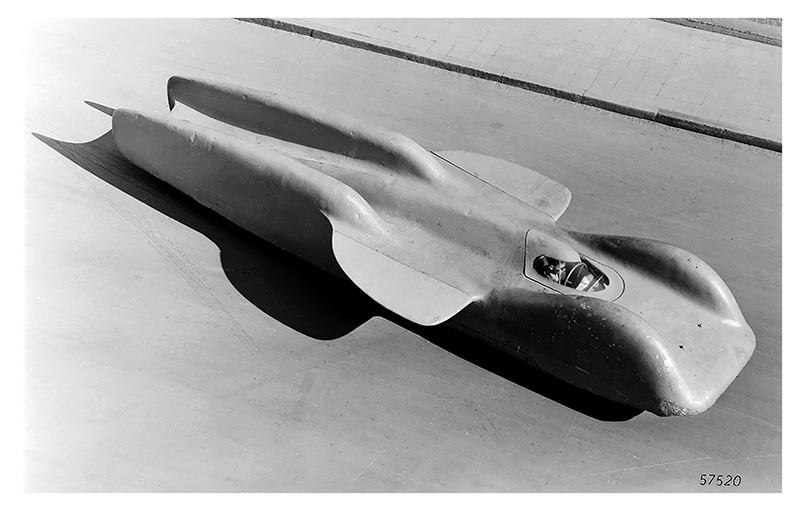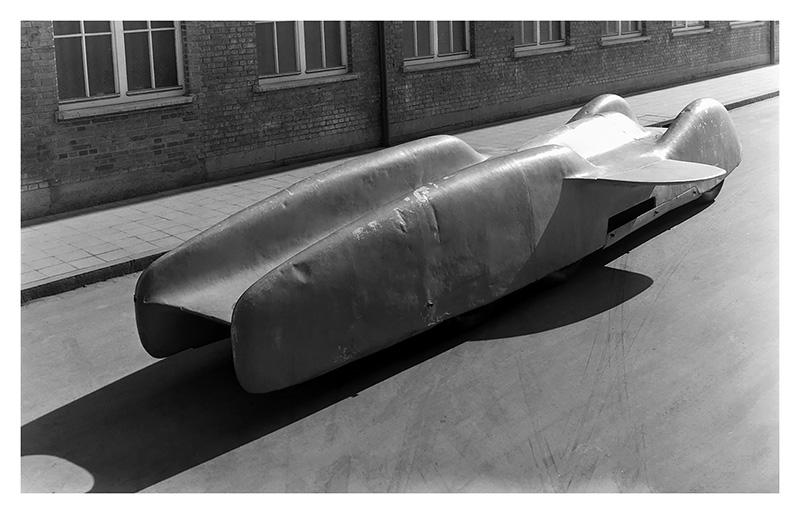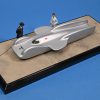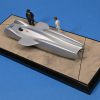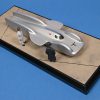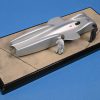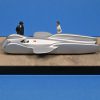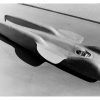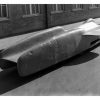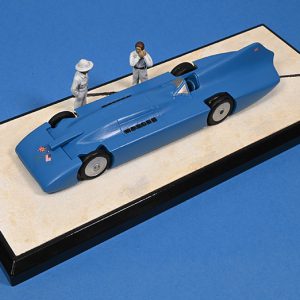Mercedes-Benz
T80 ‘Schwarzer Vogel’
Dessauer Rennstrecke, 1939
World-renowned German auto racer Hans Stuck’s ambition was to take the world land speed record. With this aim in mind he convinced Mercedes-Benz to build an experimental racing car for his attempt. Sanctioned by Adolf Hitler, the project was started in 1937 and envisioned as a propaganda coup for the Third Reich. The six-wheeled design, known as the Mercedes-Benz T80 or Type 80, was the only one of its kind. By the time of its completion in 1939, project costs had reached 600,000 Reichsmarks.
Aerodynamics specialist Josef Mikcl streamlined the car’s steel panelled body, which was built by aircraft manufacturer Heinkel Flugzeugwerke. The T80 incorporated Ferdinand Porsche’s enclosed cockpit design, low sloping hood, and rounded fenders. The rear wheels were encased in elongated tail fins to help stabilise the vehicle at speed. Two smaller wings in the mid-position provided downforce and ensured stability. The heavily streamlined twin-tailed body achieved a drag coefficient of 0.18, a very low figure even by today’s standards.
The car had three axles: the front axle provided steering, and the two rear axles were driven by a 2,717 cu in (44.5 L) Daimler-Benz DB 603 inverted V-12 aircraft engine prototype. As Germany’s largest displacement inverted V12 aviation powerplant in production during the war years, the DB 603 saw wide spread operational use as the primary engine type for many twin and multi-engined combat aircraft. Ernst Udet, director of Germany’s Aircraft Procurement and Supply, provided the third DB 603 prototype engine for installation in the T80. The supercharged DB 603 engine with mechanical fuel injection was specially tuned to 3,000 hp (2,240 kW). The engine ran on a special mixture of methyl alcohol (63%), benzene (16%), ethanol (12%), acetone (4.4%), nitrobenzene (2.2%), avgas (2%), and ether (0.4%); it utilised MW (methanol-water) injection for charge cooling and anti-detonation. Power from the engine was transmitted to the four drive wheels via a hydraulic torque converter to a single-speed final drive. To maintain traction, the T80 had a mechanical “anti-spin control” device. The front and rear wheels each had a sensor to mechanically detect wheel spin. If the rear wheels began to spin faster than the front, fuel to the engine was automatically reduced.
The T80 was 26 ft 8 in (8.128 m) long and 4 ft 1 in (1.245 m) tall. Its body width was 5 ft 9 in (1.753 m) and 10 ft 6 in (3.20 m) wide including the wings. All six wheels were 7 in x 32 in and had a 4 ft 3 in (1.295 m) track. The vehicle, with its steel plating, weighed about 6,390 lb (2,900 kg).
With the deteriorating political situation and likelihood of war in Europe, Hans Stuck discounted his original plan to attempt the record on the Bonneville salt lake in Utah, USA. Instead, a straight 10KM segment of the Autobahn near Dessau was concreted over in preparation for his speed record attempt in January 1940. However, this was cancelled due to the outbreak of the war. In fact, the vehicle’s finishing touches were never completed, and it was never driven under its own power. After the record attempt was cancelled, the T80 was garaged. In late February 1940, the DB 603 engine was removed, and the vehicle was stored in Karnten, Austria for the duration of the war. The T80 was unknown outside of Germany until discovered by the Allies. Eventually the vehicle was moved into the Mercedes-Benz Museum in Stuttgart, where it is now on permanent display in the Silver Arrows Races & Records Legend room.
Hitler had given the name ‘Schwarzer Vogel’ / ‘Black Bird’ to the T80. This is possibly in reference to Sir Malcom Campbell’s record setting ‘Blue Bird’ land speed cars. The chosen scheme reflects this and the record breaking Mercedes and Auto–Unions of the period.


